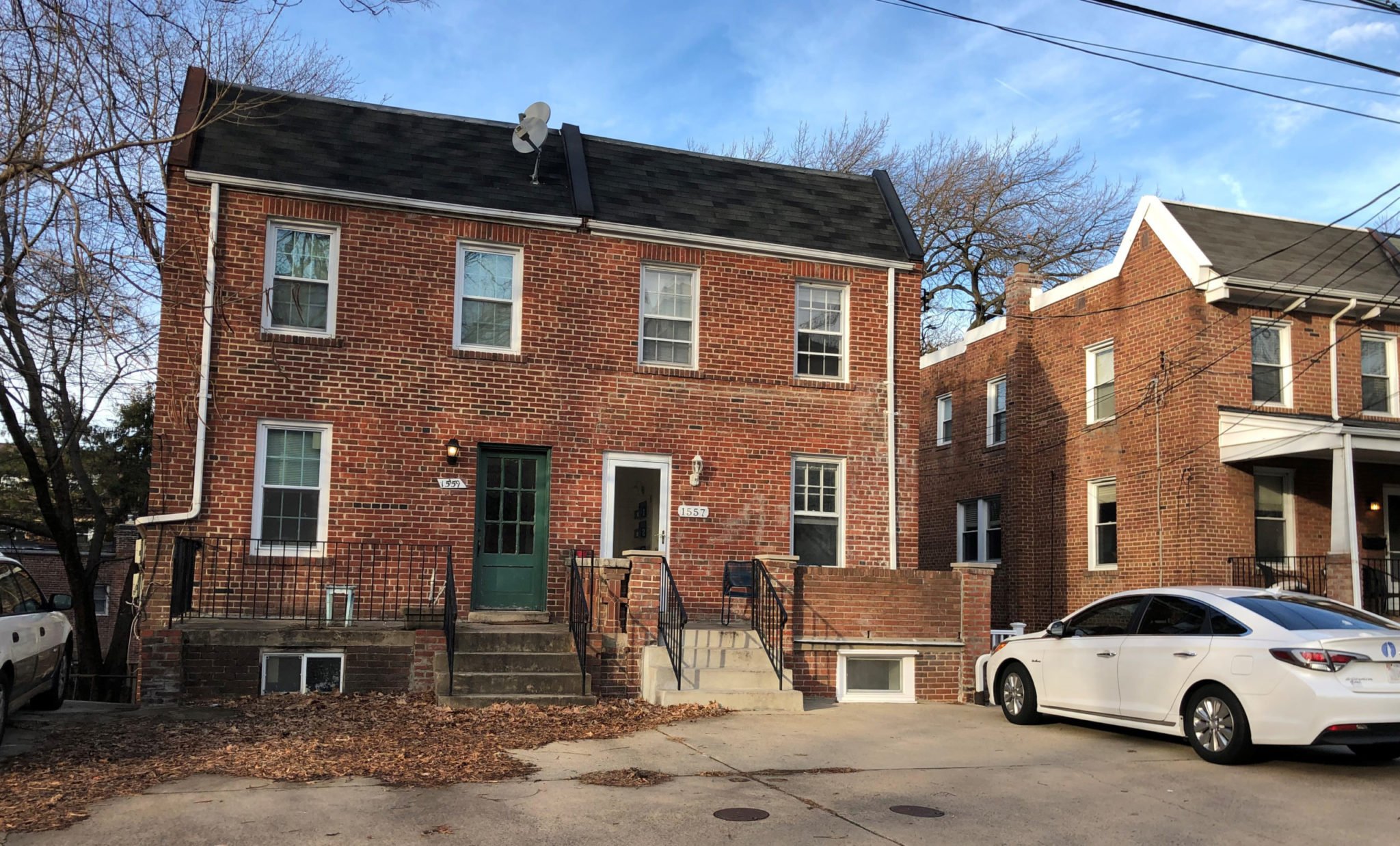If you’ve stepped foot in Arlington recently, you may have seen the phrase “missing middle housing” pop up—on pamphlets, on signs, and in op-eds. For the past few months, residents of the second-happiest place in the US have engaged in a bruising debate over whether the Arlington County Board should eliminate single-family zoning—i.e., set aside areas of the county for only single-family homes—and allow the development of low-rise multifamily homes across the locale.
The proposal could greatly affect population density and housing prices, among other issues, and the County Board is expected to vote on it sometime early in 2023. So, here’s a rundown:
What is “missing middle” housing?
The term “missing middle” describes the range of small residential buildings with multiple units—think something between a detached single-family home and a mid-to-high-rise apartment building, such as townhouses, duplexes, and small apartment buildings. These homes are “missing,” housing advocates say, because many cities have zoning rules that preclude them. But contrary to popular belief, missing middle housing types aren’t income-based nor do they correlate with a specific income bracket, even though they tend to be more affordable for more low-and-moderate income residents.
Doesn’t Arlington already have other housing options besides single-family homes and high-rise apartment buildings?
While there are missing middle-type homes in several neighborhoods, detached single-family houses and mid-to-high-rise apartment buildings make up more than 70 percent of the county’s housing stock. Plus, Arlington’s Zoning Ordinance has been amended over time to keep other housing types from being built in most areas. As a result, about 75 percent of residential land across the county has been designated as single-family zones, where developers can only build one detached home on each lot.
Well, what would the proposal do?
It would still be legal to build detached single-family homes across the county. But the new policy would ultimately allow developers to build two-family homes, three-unit townhouses, and multifamily buildings with up to six or eight units in districts that have previously been zoned for single-family homes. These homes would be restricted to lots that spread across one acre or less and concentrated in areas that have low population density. This would also be permitted by-right, which means developers don’t have to get the approval of County Board as long as they comply with development regulations.
Who’s for it and why?
The proposal has garnered support from housing advocacy and other civic organizations across the county, such as the Alliance for Housing Solutions and the Arlington Chamber of Commerce.
Advocates of “missing middle” argue that the county’s zoning policies have hindered Black and Brown residents from finding affordable homeownership opportunities and that the expanded housing options would be more affordable for low-and-moderate-income workers. Instead of homebuyers having to foot the entire bill for expensive land costs, the price would be spread out between multiple households. They also say the plan will allow more residents to live closer to public transportation and their workplace, which would shorten commutes and reduce greenhouse emissions.
While the proposal won’t be a cure-all for Arlington’s housing problems, supporters say legalizing missing middle homes would be a good start to tackling them. “There are issues related to housing that go back over a century,” says Bryan Coleman, the NAACP Arlington Branch’s housing committee vice chair. “It would be unreasonable to expect one policy to fix all of them.”
Who’s against it and why?
On the other hand, community groups such as Arlingtonians for Our Sustainable Future (ASF) and Arlingtonians for Upzoning Transparency (AFUT) have been at the forefront of the opposing side of the debate.
ASF member Peter Rousselot says critics aren’t against denser and more diverse neighborhoods, but they say the zoning changes will accelerate the population growth that was already projected to add 49,000 residents to the population by 2040. The County has yet to release a long-term plan for funding and building new infrastructure to support that increase, so opponents doubt that Arlington will have the adequate resources to handle an even bigger population that may arrive sooner than expected.
Another major concern is that upzoning single-family neighborhoods would make gentrification worse and decrease homeownership opportunities for lower-income residents. If developers are permitted to build multi-family homes on a single-family lot, opponents argue, the already expensive value of the property will increase. They also argue that the average family won’t be able to outbid a developer for home, so there’s a possibility that the new dwellings would be sold to investors as rental properties instead of residents.
All in all, opponents say the County should just slow down. AFUT recently described the proposal as “rushed and deeply flawed,” and others have agreed that the County should take more time to study the impact of the zoning changes and the challenges it is trying to solve. Rousselot is also worried that the County hasn’t done a good job of educating the public about the proposal. “After all these months of publicity and County Board meetings, we still find that there are homeowners all over the county who have no idea what ‘missing middle housing’ is,” Rousselot says. “So far, the people who have begun to learn about [the plan] are convinced that the Board hasn’t really thought this through.”
The County Board recently edited the proposal to address concerns from residents. Why are so many people still upset about it?
While the County Board did add new provisions to the zoning changes based on weeks of feedback from residents, both supporters and critics still have mixed feelings. The new draft proposal, released in late October, considers whether the number of units should be restricted based on lot size and if an annual cap should be placed on the number of permits issued for developing the new housing options. It also imposes a minimum parking space requirement based on proximity to public transit and suggests that a tree should be planted for every unit on a lot.
Still, opponents argue that the changes don’t address their core concerns, and they haven’t been given enough time to process and go through the edits before the County makes its next steps. “The proposal’s recently revealed details include sweeping changes that are too complicated too hurry through,” Julie Lee, an AFUT founding member, said in a press statement about the new draft. “Residents and County commissions and committees need much more time to fully understand what these changes will mean for Arlington.”
On the other hand, some advocates are concerned that more restrictions are counterintuitive to increasing housing diversity and eliminating exclusionary zoning. They question whether building eightplexes would even be feasible under the proposed lot size constraints. If not, that could lead to an abundance of duplexes and three-unit townhomes. While supporters are in favor of these housing types in general, they are worried that the homes would still be too expensive for the average buyer.
So, when will the County Board actually vote on the proposal?
In a majority vote, the Arlington County Planning Commission requested the County Board advertise public hearings on the zoning code changes this month. A recent staff report from the Planning Commission says the County Board could deliberate on the request as early as January 21. If approved, this would give the public a chance to process and weigh in on the proposal before the final vote. County Board vice chair Christian Dorsey told WAMU in an interview in November that the Board would want to spend at least two months advertising the changes, meaning the proposal could make its way back to the Planning Commission and County Board for a final vote by March 2023.
Have other municipalities adopted missing middle housing?
Yes. Several cities across the country have legalized missing middle housing types over the past decade, including Portland, Minneapolis, and Sacramento. While Arlington has been the only local jurisdiction to get this far on adopting missing middle housing, Montgomery County has also been eyeing some changes to their zoning code. The Montgomery County Planning Department completed its own housing study in 2018, and the county’s recently updated general plan encourages the County Council to “plan for a wide range of housing types.”

















